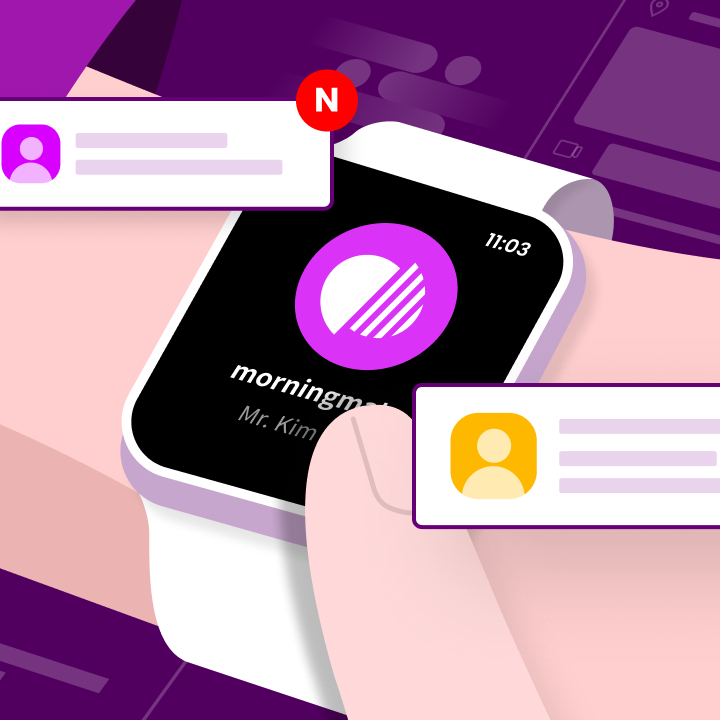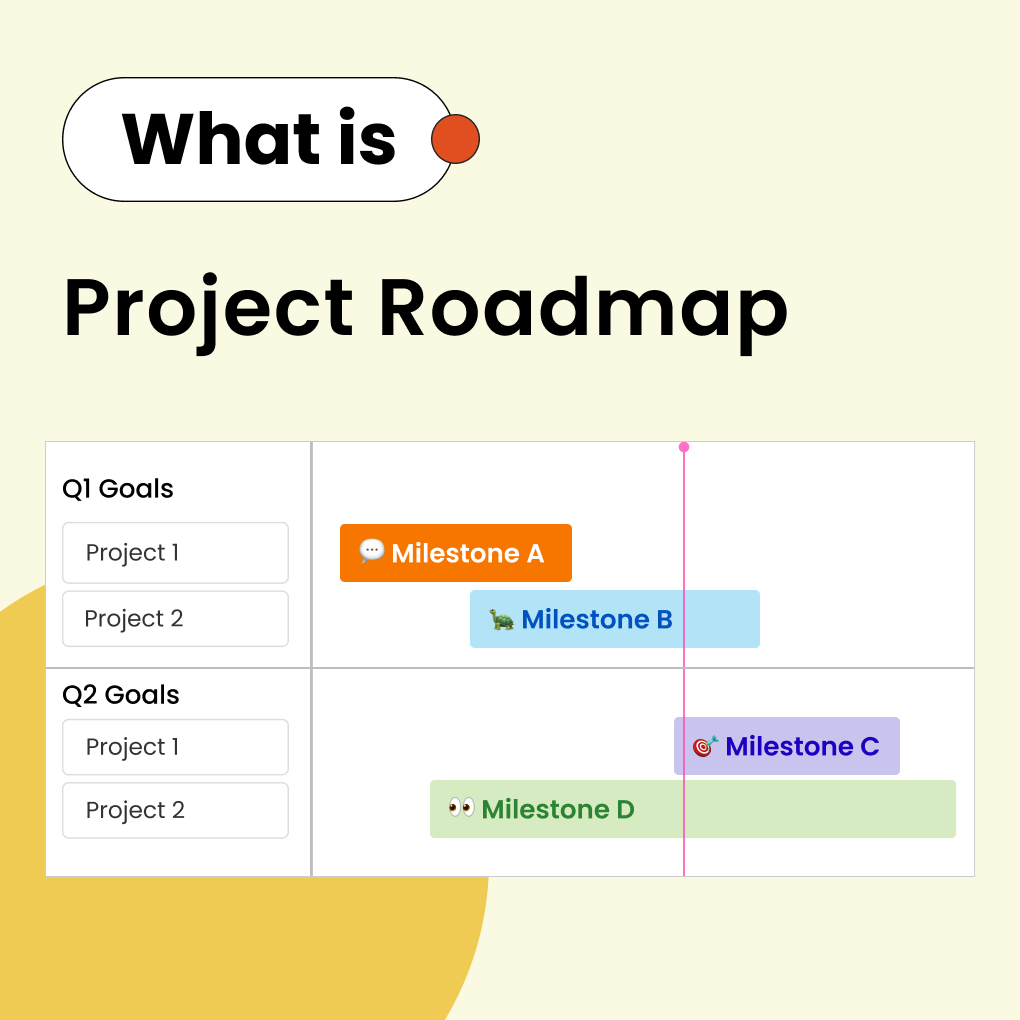Most small‑business team members struggle to manage tasks efficiently, leading to missed deadlines and wasted time on manual to-do lists. Task management poses a significant challenge for many businesses. Automated task management software alleviates this burden by handling scheduling, reminders, and delegation with minimal effort.
In 2025, the best tools will be AI-driven, helping you manage work, calendars, and shifting priorities. These solutions enable teams to stay coordinated without constant manual updates. The right software can streamline workflows and reduce stress for both small teams and large corporations.
What Is Team Task Management?
Team task management involves organizing, assigning, and tracking work among a group. Unlike individual task management, it requires coordination and clear communication. Team members need real-time visibility into each other’s tasks, ensuring everyone understands their roles and stays aligned.
Today, automation tools are essential for effective task management. Without them, teams risk falling back on manual tracking methods. These platforms centralize assignments, allowing you to create, assign, and monitor tasks without constant oversight. Features like automated reminders, progress tracking, and workload balancing help employees remain efficient while minimizing miscommunication and bottlenecks.
Key Challenges in Managing Team Tasks
Miscommunication is a significant barrier in team task management. Without clear systems, team members may misinterpret deadlines, priorities, or task ownership, leading to duplicated efforts or missed deliverables. Relying on chat and email threads can complicate task tracking and accountability.
Another common issue is workload imbalance. Some team members may be overwhelmed while others have excess capacity, creating frustration and inefficiency. When priorities shift, manual tracking makes it difficult to adjust tasks accordingly. Spreadsheets and basic to-do lists lack the flexibility needed for dynamic reassignment, and without real-time updates, teams struggle to anticipate challenges before deadlines.
Remote and hybrid teams face additional hurdles, as the lack of physical coordination increases the risk of misalignment. Time zone differences can delay task completion, causing teams to waste time clarifying responsibilities instead of making progress.
Benefits of Using Task Management Tools
Intuitive and user-friendly task management software can eliminate many hassles. These platforms allow teams to break projects into actionable tasks, assign them to responsible individuals, and set deadlines—all in one place. Everyone can track progress in real-time without needing constant status updates.
Automation significantly reduces administrative overhead. Features like recurring task templates, deadline reminders, and auto-assignment rules eliminate repetitive manual work. Dashboards help managers balance task distribution, preventing burnout.
Integrating with other tools like calendars, email, and messaging apps keeps all work-related communication synchronized. Team members receive alerts in their preferred platforms, reducing the need to switch between applications. Some advanced tools even use AI to predict delays and suggest adjustments before issues arise.
What is Automated Task Management?
Automated task management transforms how tasks are managed by individuals and teams. With advanced software, it reduces the need for constant manual input in organizing daily tasks.
By allowing technology to handle tasks automatically, it liberates employees from repetitive jobs such as creating reminders, updating statuses, and chasing approvals. This transition improves personal efficiency and enhances team task management on a larger scale.
Task automation involves software carrying out predefined actions. Core functions operate through straightforward rules and increasingly advanced AI, which can interpret incoming requests, prioritize tasks, and route work to the right people. This technology can mimic or even exceed human abilities, eliminating emotional biases, forgetfulness, and other human shortcomings.
How Automation Boosts Productivity
Automating task management enhances productivity by reducing mental strain on knowledge workers. Modern systems can simultaneously consider various factors like deadlines, team members’ workloads, task dependencies, and individual working habits—analyses that would be too time-consuming for humans.
For teams, automation creates a system where work automatically flows to available resources. As soon as a team member finishes a task, the system assigns the next one from the backlog. If a deadline is nearing with no progress, the system raises an alert without management needing to step in. These capabilities are critical in environments where constant supervision isn’t feasible.
The overall impact is a notable recovery of time. Studies show that knowledge workers dedicate nearly 60% of their day to tasks that don’t add value, like monitoring status updates and searching for information. Automated task management can reclaim a significant amount of that lost time by managing tasks in the background.
Examples of Automated Workflows
Automated task management has been applied successfully in various projects across multiple industries. Support teams sort incoming emails or chats into tickets by urgency and automatically assign them to specialists based on current workloads, speeding up response times without needing manual input.
Creative teams use automation in content approval workflows, automatically routing drafts to the right stakeholders based on content type. If there’s no response from reviewers in a set time, the process includes escalation paths. Sales and marketing teams employ campaign task generators to break campaigns into numerous tasks with sequences and dependencies.
Modern systems also offer adaptive rescheduling, which is especially beneficial. When priorities shift or deadlines change, the software can postpone less urgent tasks to maintain uninterrupted focus. Some platforms even adapt to individual productivity patterns, scheduling creative work during peak performance times.
Essential Features to Consider in a Task Management Tool
Identifying the features that matter most to you is crucial when selecting task management software. The best tools go beyond simple checklists; they offer smart automation, seamless collaboration, and effective organization. These features can significantly impact whether tasks are completed, whether for personal productivity or team projects.
User-Friendly Interface and Experience
Effective task management starts with user-friendly software. Complicated tools can create more work instead of saving time. The ideal task management software features a clear layout, easy navigation, and straightforward labels. Users should be able to add tasks, set priorities, and track progress without extensive training. Mobile access is also essential, as many people switch devices throughout the day. The quicker you can start using your chosen tool, the better.
Task Automation and Scheduling
Automation in task management enhances efficiency. Look for tools that can handle repetitive tasks automatically. You should be able to schedule recurring tasks, move items between stages based on specific conditions, and adjust deadlines as needed. More advanced systems can prioritize urgent tasks, ensuring they appear at the top of your list while rescheduling less critical work. These features allow you to focus on what truly matters, freeing up time for more important tasks.
Collaboration and Communication
Team task management tools should promote easy collaboration. Each task should allow you to assign work, add comments, and attach files, keeping everyone aligned. Team members can stay informed without constant meetings, thanks to activity feeds and change notifications. Some tools even include chat features for discussing specific tasks. A good team task management software eliminates the need for separate communication tools by keeping all discussions within the task, reducing the risk of missing important information.
Integration with Other Tools
No task management system operates in isolation. The best platforms integrate with the software teams use daily. Calendar integration ensures deadlines appear alongside meetings, and you can convert emails or messages into tasks with a single click.
When businesses link their task management software to their CRM, project management, or accounting systems, workflows become more efficient. When evaluating options, consider which integrations are built-in and which require additional setup. The more tools your software connects with, the fewer places users need to check for updates.
Effective task management software should save you time rather than add to it. While no single tool does everything, focusing on these key features can help you find solutions that meet your needs. The best intuitive task management software seamlessly supports your work, allowing you to focus on getting things done.
Top Team Task Management Tools for 2025
The right task management software can transform how a team organizes and completes its work. Your specific needs—whether for collaboration, complex projects, or extensive automation and integration—will guide your choice. The best tools in 2025 are smart, user-friendly, and designed to help teams work efficiently. Workplace management platforms cater to various work styles and business sizes, offering solutions from AI-powered scheduling to flexible workspaces.
Morningmate – Best for Intuitive Team Collaboration and Guest Access
Morningmate combines simplicity with powerful functionality for modern hybrid teams. Its clean interface is easy to learn, enabling teams to be productive from day one. Unlike complex project management suites, Morningmate focuses on essential features with high usability—perfect for teams that value efficiency without unnecessary overhead.
Morningmate’s advanced guest access system allows seamless collaboration with clients, freelancers, and third-party partners. Unlike many competitors, it enables full project participation for guests without additional licensing costs—ideal for agencies and client-facing teams.
The platform supports visual task management with real-time updates, so everyone stays aligned without constant check-ins. With smart notifications and integrated video meeting tools, teams can streamline communication and reduce tool-switching.
If your team prioritizes intuitive collaboration over complex project hierarchies, Morningmate offers a focused, frictionless solution—helping teams get real work done faster.
Start with a free trial of Morningmate—see how quickly your team can streamline communication, keep priorities clear, and move projects forward without the overhead.
Motion – Best for Auto-Scheduling and AI Prioritization
Motion’s intelligent scheduling engine automatically organizes your tasks and daily agenda. This smart tool assesses your calendar, deadlines, and priorities to optimize available time slots. Motion adjusts your schedule in real-time, delaying tasks when meetings run late or urgent work arises.
This AI-powered solution addresses the challenges of busy calendars and missed deadlines. Over time, the system learns your work patterns, scheduling creative tasks for when your energy is highest and routine tasks for when it’s lower. Motion acts as a personal assistant, optimizing your time management across multiple projects.
Asana – Ideal for Task Visualization and Team Planning
Asana is a popular tool for teams that prefer visual project management. Its Project Timeline and Board Views provide a clear overview of project progress and dependencies. Managers can quickly spot bottlenecks and adjust workloads as needed. The platform excels at breaking down large initiatives into manageable steps, making it perfect for complex team task management.
Asana strikes a balance between simplicity and powerful features. It’s user-friendly for smaller teams while also scalable for larger organizations. With new reporting tools, team leaders can gain insights into their team’s workload and project health.
ClickUp – Best for Customization and Automation
ClickUp is designed for teams that want complete control over their task management. The platform offers exceptional flexibility, allowing users to create custom statuses, views, and workflows tailored to their specific processes or industries. Its automation builder is particularly noteworthy, enabling teams to set up complex rules without any coding skills.
Tasks can automatically reassign based on workload, transition between stages when certain criteria are met, or trigger notifications for overdue items. While the extensive options may overwhelm some users, teams that invest time in setup will benefit from a highly customized and intuitive task management solution. Recent updates have streamlined the interface while preserving its robust functionality.
Wrike – Best for Enterprise-Level Project Coordination
Wrike caters to larger organizations that require comprehensive team task management. The tool offers advanced features like Gantt charts, resource management, and time tracking, all while ensuring enterprise-grade security. Its proofing and approval workflows simplify content review processes, making it ideal for marketing and creative teams.
Wrike excels at combining powerful functionality with clear reporting, providing executives with visibility without micromanagement. The platform integrates seamlessly with other business systems, creating a central hub for all work activities. While smaller teams may find it excessive, enterprises benefit from its thorough approach to coordinating complex initiatives across departments.
Todoist – Best for Simple, Personal Task Tracking
Todoist demonstrates that sometimes less is more in task management. This lightweight tool helps individuals stay organized without unnecessary features. Its rapid task entry and clean interface make it perfect for personal productivity. While it does support basic team task management, Todoist truly shines for professionals who want to manage their workload simply.
The app’s natural language input allows users to create tasks with due dates and priorities in seconds. Recent AI enhancements suggest optimal times to schedule tasks based on past completion patterns. For teams that primarily need shared lists rather than full project management, Todoist offers a straightforward solution.
Notion – Best for Flexible Content and Task Management
Notion takes a unique approach by merging task management with document creation and knowledge bases. This makes it ideal for teams that work extensively with content and need to link tasks to reference materials. Users can create custom workspaces that align with their workflows, ranging from simple checklists to complex project dashboards.
Notion’s adaptability is its greatest strength; it can serve as a lightweight task management tool or expand into a full company wiki. The platform is particularly beneficial for creative teams and remote workers who need to consolidate tasks, notes, and collaboration in one place. Although it requires more setup than dedicated task tools, the result is a fully personalized system.
FAQs About Task Management Tools
What’s the best task management tool for teams?
The best tool depends on your team’s size and needs. For small teams, Morningmate offers straightforward collaboration with guest access. Larger teams may prefer ClickUp for its customization options or Wrike for its enterprise features. Teams seeking AI-powered scheduling should consider Motion, while creative groups often choose Notion for its flexible workspace.
How can automation improve task tracking?
Automation streamlines repetitive tasks like reminders, status updates, and scheduling. Tools like Motion automatically adjust deadlines when conflicts arise, while others reassign tasks when team members are overloaded. This reduces manual updates and ensures nothing falls through the cracks, allowing teams to focus on what matters most.
Are there free task management software options?
Many tools offer free plans with basic features. Todoist is great for personal tasks, while Asana and ClickUp provide free versions for small teams. These typically limit users or features but can suffice for simple projects. For advanced automation or larger teams, paid plans unlock additional functionality.
Final Thoughts: Which Task Manager Is Right for You?
Choosing the right task management tool for your team requires understanding your workflow and priorities. The best solution isn’t always the one with the most features; it’s the one that fits seamlessly into your work style.
Morningmate offers a simple interface that encourages intuitive collaboration. If AI-powered scheduling and automatic prioritization are priorities, Motion is the smart choice for your calendar. Notion is excellent for creative teams and knowledge workers, while Wrike is perfect for organizations needing enterprise-level features.
The good news? Most quality task managers provide free trials or limited versions. Take advantage of these to assess a platform’s compatibility with your actual work patterns before making a commitment. When selecting a tool, prioritize one that your team will genuinely use, rather than just the latest trend. Sometimes, a simpler, cost-effective tool can be more effective than a complex, high-end option.
Ultimately, the best task management solution should integrate naturally into your workflow, not add to your workload. When you find the right fit, you’ll experience smoother collaboration, fewer missed deadlines, and more time to focus on meaningful work.
Start with a free trial of Morningmate—experience intuitive collaboration that fits naturally into your team’s workflow, with scheduling and prioritization built in.




